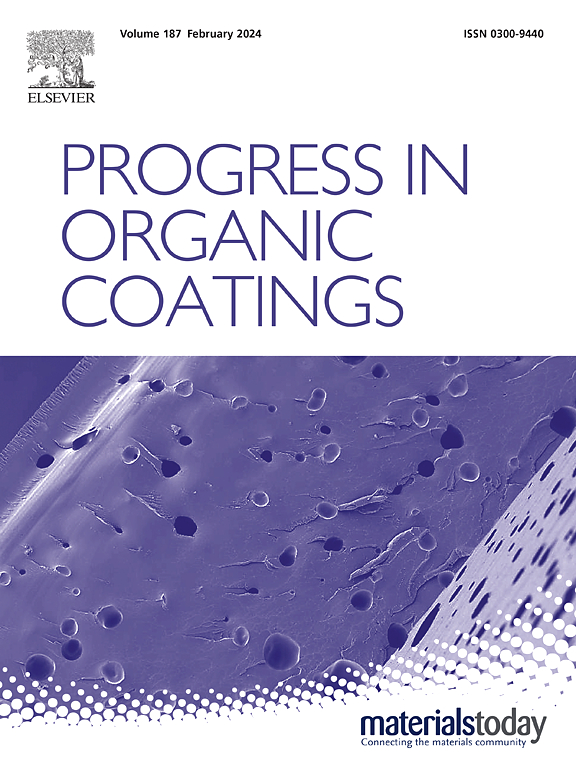Photothermal self-healing and anti-corrosion water-borne coatings based on phytic acid-doped polyaniline
IF 6.5
2区 材料科学
Q1 CHEMISTRY, APPLIED
引用次数: 0
Abstract
Over extended periods of use, it may appear micro-cracks on the coating due to physical damage or other factors, which could destroy the overall structure and reduce the protective effect of the coating. It is thus highly desirable to develop coatings with both self-healing and excellent anti-corrosion performance to elongate the service life of the coating. In this study, a novel type of intelligent water-borne coating with photothermal self-healing and anti-corrosion properties was exploited. The strategy is that phytic acid (PA) doped polyaniline (PANI) was utilized as the photothermal conversion material and green anti-corrosion filler. The influence of the PA:PANI ratio as well as PA-PANI content on the dispersibility of PA/PANI and the coating properties was explored using scanning electron microscopy, electrochemical impedance spectroscopy, and neutral salt spray tests. The doping of PANI by PA significantly improved the dispersibility of PANI in waterborne coatings. The incorporation of PA/PANI led to remarkable advancements in the adhesion, anticorrosive performance, and self-healing capability of the coating. Due to the corrosion inhibition of PANI, the coatings with 1–5 wt% PA/PANI exhibited enhanced corrosion resistance, with no pitting or corrosion product after 2000 h of salt spray testing. Additionally, the PA/PANI coating showed rapid crack closure behavior after 10 s of NIR light irradiation because of the photothermal property of PANI, achieving a repair efficiency of over 95 %.

求助全文
约1分钟内获得全文
求助全文
来源期刊

Progress in Organic Coatings
工程技术-材料科学:膜
CiteScore
11.40
自引率
15.20%
发文量
577
审稿时长
48 days
期刊介绍:
The aim of this international journal is to analyse and publicise the progress and current state of knowledge in the field of organic coatings and related materials. The Editors and the Editorial Board members will solicit both review and research papers from academic and industrial scientists who are actively engaged in research and development or, in the case of review papers, have extensive experience in the subject to be reviewed. Unsolicited manuscripts will be accepted if they meet the journal''s requirements. The journal publishes papers dealing with such subjects as:
• Chemical, physical and technological properties of organic coatings and related materials
• Problems and methods of preparation, manufacture and application of these materials
• Performance, testing and analysis.
 求助内容:
求助内容: 应助结果提醒方式:
应助结果提醒方式:


